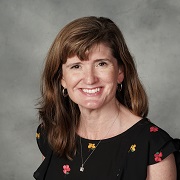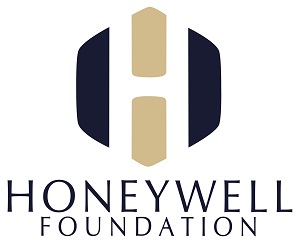 Special to the Philanthropy Journal
Special to the Philanthropy Journal
By Cathy Gatchel, Vice President of Development and Marketing: The Honeywell Foundation
In January 2017, The Honeywell Foundation was faced with a seemingly insurmountable challenge: Raise more than $15 million in a year’s time for the Eagles Renovation Project, in a community that falls below the national poverty line.
The Honeywell Foundation relied on four specific steps to do so, reminding us that even the most ambitious goals can be met with an individualized action plan.
The Challenge of Eagles Theatre
In the quiet town of Wabash, Indiana exists a historic, 111-year-old vaudeville theatre owned and operated by The Honeywell Foundation that is undergoing renovations to create a hub of arts and culture in rural America.
 Upon completion of the project, dubbed the “Eagles Renovation Project,” the four-story Eagles Theatre will be fully renovated, housing two community movie theatres, a stage for exciting performing arts shows, film studios and recording booths, multimedia classrooms, grand ballroom renovations, and exciting arts and culture programs, including:
Upon completion of the project, dubbed the “Eagles Renovation Project,” the four-story Eagles Theatre will be fully renovated, housing two community movie theatres, a stage for exciting performing arts shows, film studios and recording booths, multimedia classrooms, grand ballroom renovations, and exciting arts and culture programs, including:
- A career center partnership for dual high school/college credits in the arts.
- A year-round musical and dramatic theater program for children ages kindergarten through 12th
- Live theatrical performances of children’s literature, bringing the classics studied in the classroom to the stage.
- Multi-week summer programs that allow participants to work closely with professional artists and teachers who specialize in live theatre, visual arts, and vocal performance.
The Eagles Renovation Project would not have been launched at all without the fundraising success of The Honeywell Foundation. However, they were tasked with raising $15 million in one year, in a rural community that doesn’t have much disposable income to commit to altruism for the arts. Here’s how they succeeded.
How The Honeywell Foundation Raised $15 Million in 12 Months
The Honeywell Foundation took a specific approach to their strategy, knowing their particular challenges intimately. These key tips led The Honeywell Foundation’s fundraising success, and may help you, too.
- A small, but hardworking, team makes an impact. The Honeywell Foundation’s core fundraising committee was comprised of four key individuals. While some may view a smaller team as a disadvantage–drawbacks included few breaks, even on weekends and holidays–the size allowed for great agility and flexibility.
Decisions and minor changes in strategy were made with ease because the group was generally in sync with goals and needs. Additionally, little confusion existed because it was simpler to communicate within the small group. For The Honeywell Foundation, a small, dedicated committee of leaders was more effective than a large group.
- Know your audience. In the rural Midwest especially, personal connection is the crux of communities–and business. The Honeywell Foundation knew this, and approached their audience appropriately: personal visits were the primary fundraising tactic.
Major gifts were secured through this one-on-one time with donors, where The Honeywell Foundation truly got to know the motivations and personal stories of the donors. Many of these stories included the backdrop of Eagles Theatre through the decades, which made the prospect of reviving it even easier for donors to get excited about.
- Grants help in more ways than one. While securing grants and aids was a crucial part of the fundraising success, an unexpected benefit existed in the process. Some of the grants required public presentations as a part of the application process. The Honeywell Foundation used this as an opportunity to tune in to the public’s enthusiasm about the Eagles Renovation Project.
Upon presenting, the fundraising group paid special attention to the feedback. As they applied for more grants and aids, this response acted as a barometer for the general sentiment about the Eagles Renovation Project and allowed the team to make informed adjustments to their pitch and better predict the donation landscape.
- Digital marketing raised awareness. The Honeywell Foundation experimented with digital marketing throughout the duration of the main fundraising push. Their social media, online advertising, blogging, and email efforts resulted in many new gifts and enormous feedback in the form of support and awareness in the community.
Most of The Honeywell Foundation’s marketing budget went to producing videos, which were shared via social media and garnered much online traffic. In one instance, The Honeywell Foundation relied on digital promotion of a public open house at Eagles Theatre. This event kicked off the public fundraising campaign and allowed everyone access to spaces within the theatre that many people had never seen. The result? More than 1,100 people (in a town with a population of a little more than 10,000!) attended the event.
In Sum: Personalize Your Approach.
Don’t let the challenges of your community diminish the success you could accomplish with a major, even “impossible,” goal. Tailor your approach to the wants and expectations of your donor base and be creative.
Even the smallest nonprofit organizations can make a big impact with the tips The Honeywell Foundation followed.
Cathy Gatchel is the Vice President of Development and Marketing at The Honeywell Foundation in Wabash, IN. She leads the branding, key messages, and donor funding strategies for this nonprofit arts center in rural northern Indiana. Previously, Cathy worked in higher education advancing alumni connections and annual donations. A native Hoosier, she obtained her B.A. from Indiana University where she earned admittance into Phi Beta Kappa.
The Honeywell Foundation is a public charity in Wabash, Indiana. The organization and its venues – Honeywell Center, Honeywell House, Charley Creek Gardens, Dr. Ford Historic Home, Eagles Theatre, and 13-24 Drive In – provide artistic, social, cultural, and recreational opportunities for all. For more information about The Honeywell Foundation, please visit www.honeywellfoundation.org.




